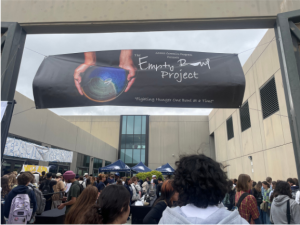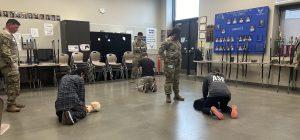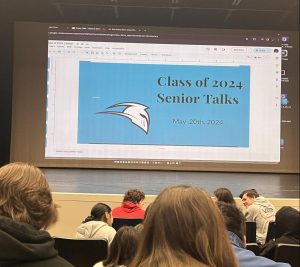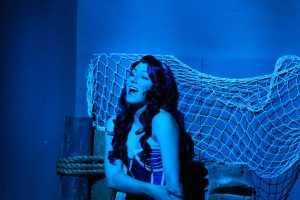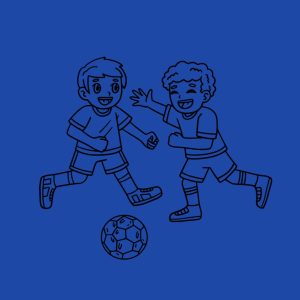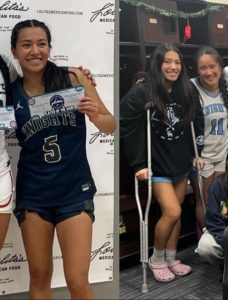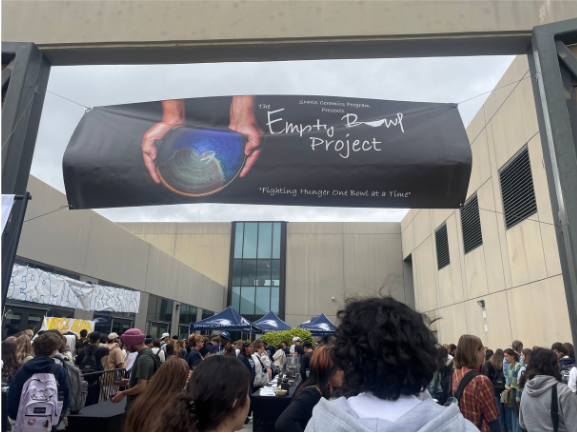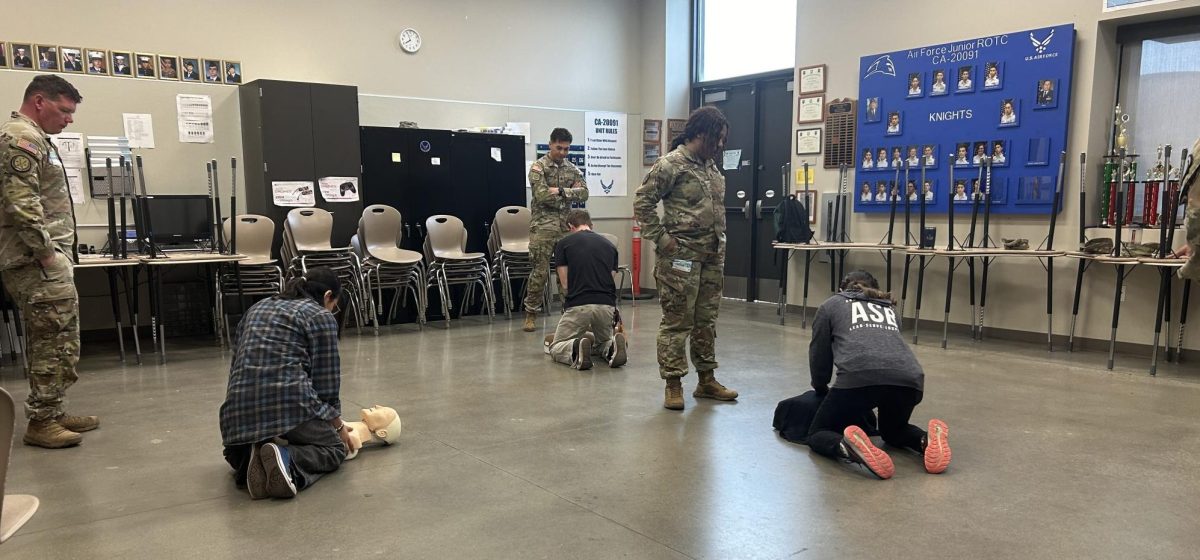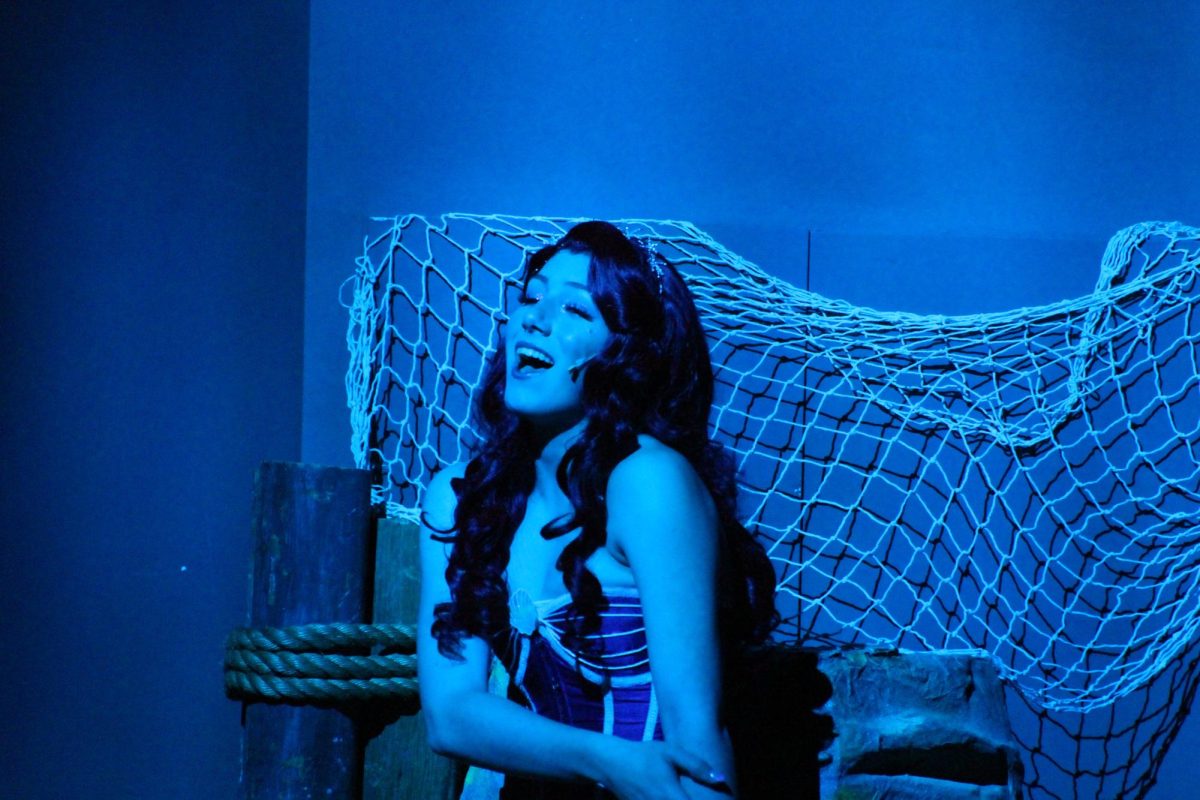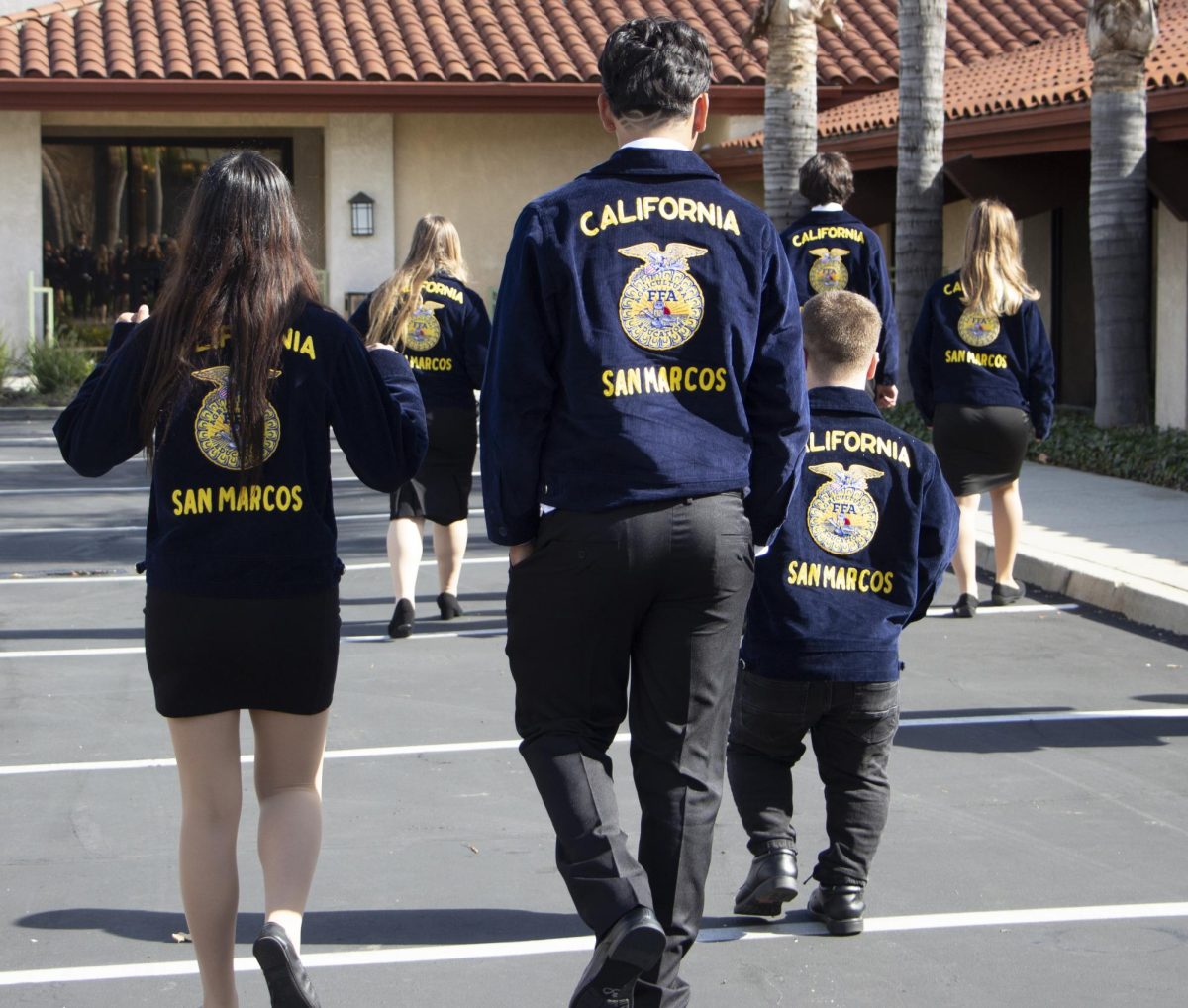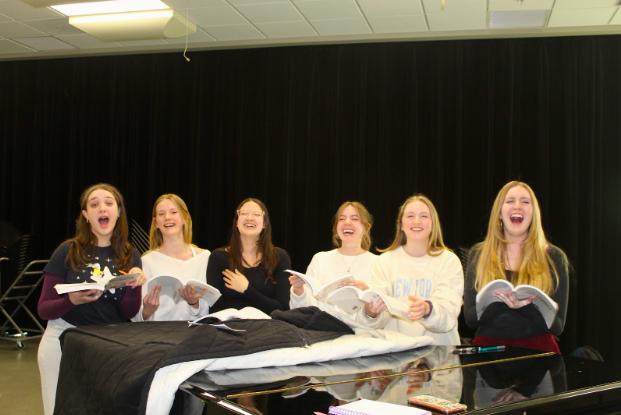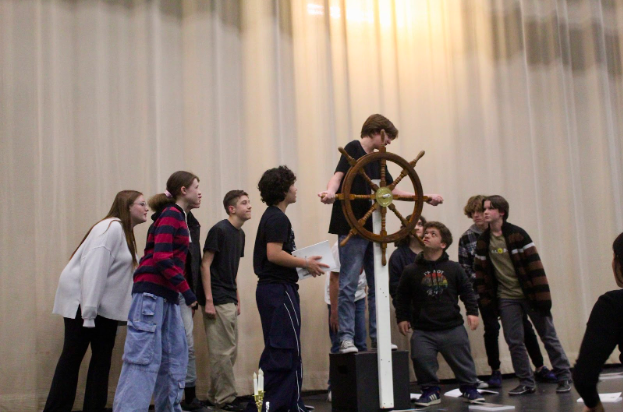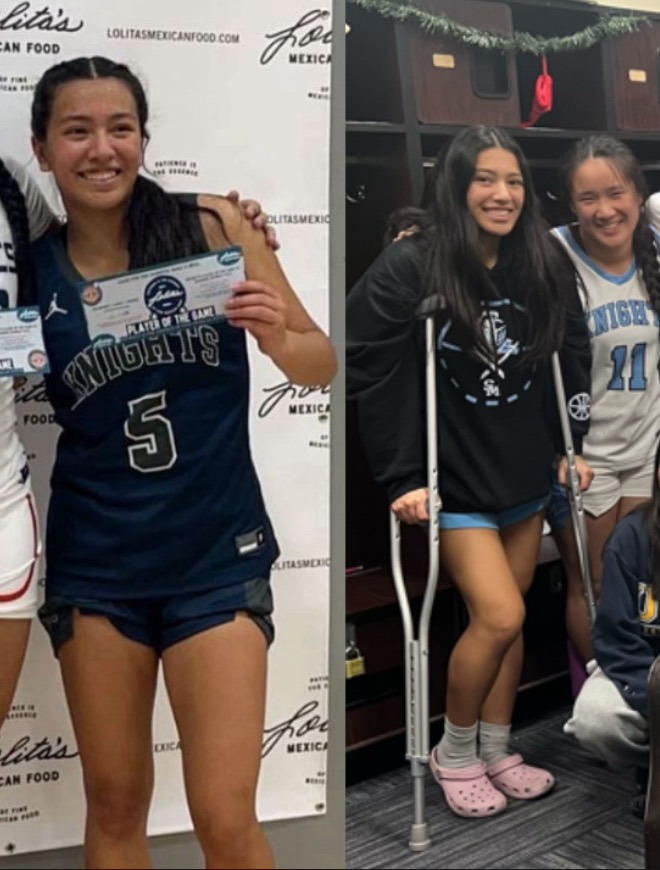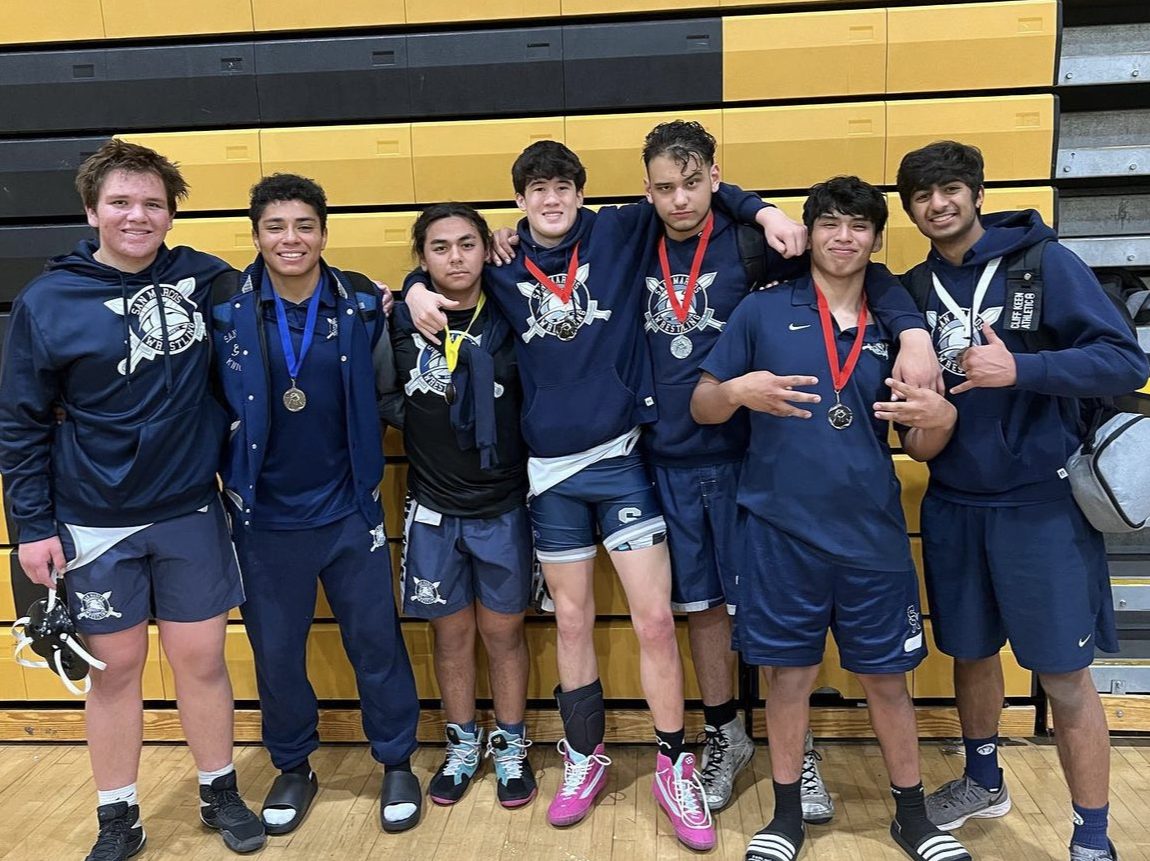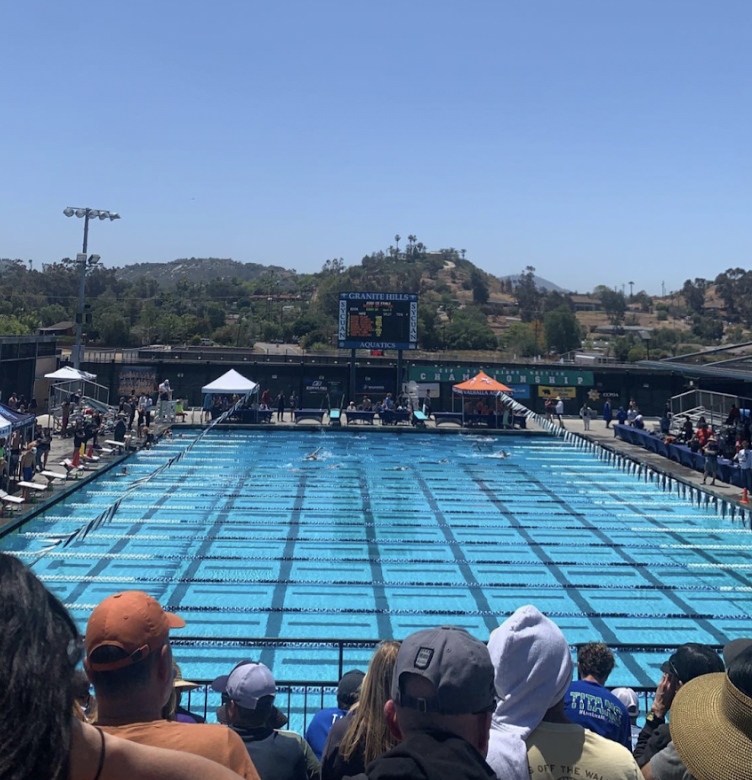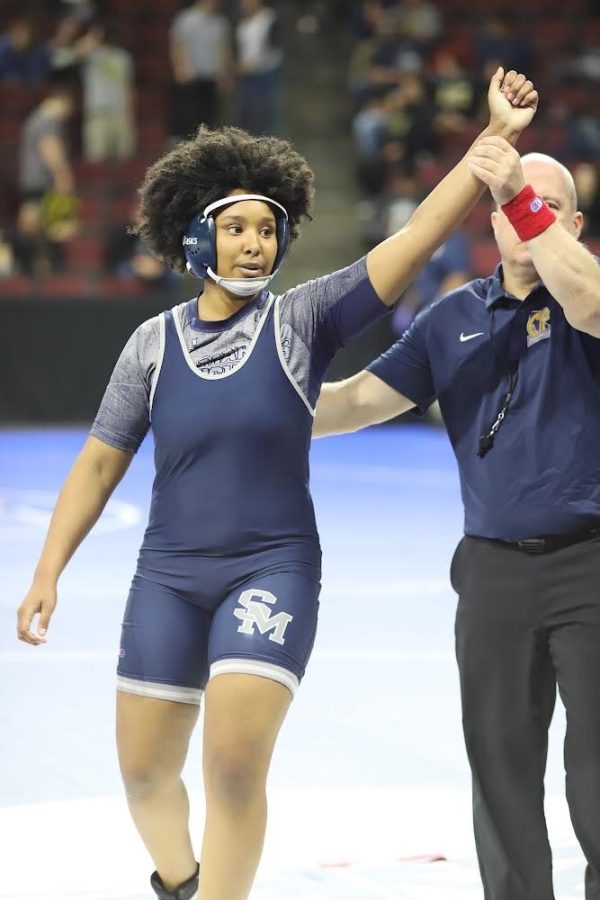Behind the Scenes: The Unsung Heros of High School Athletics
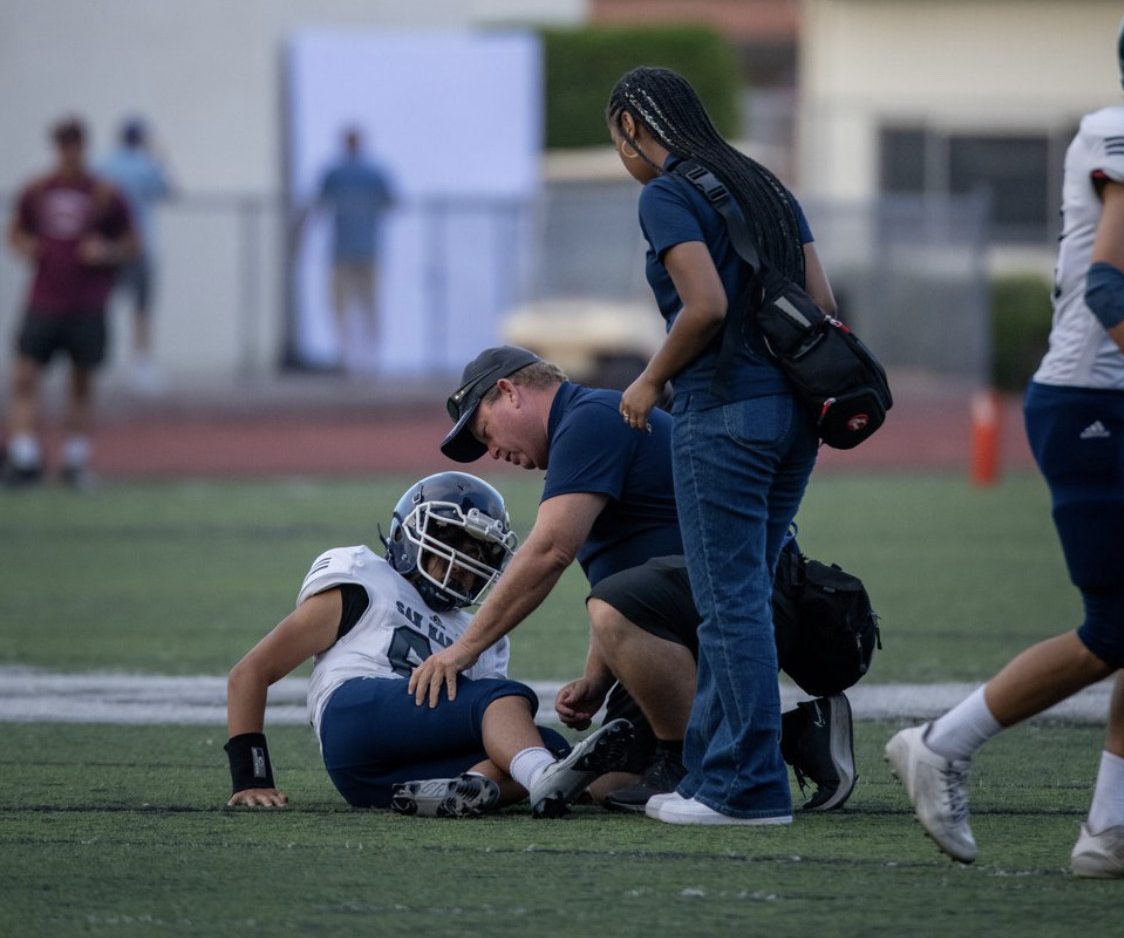
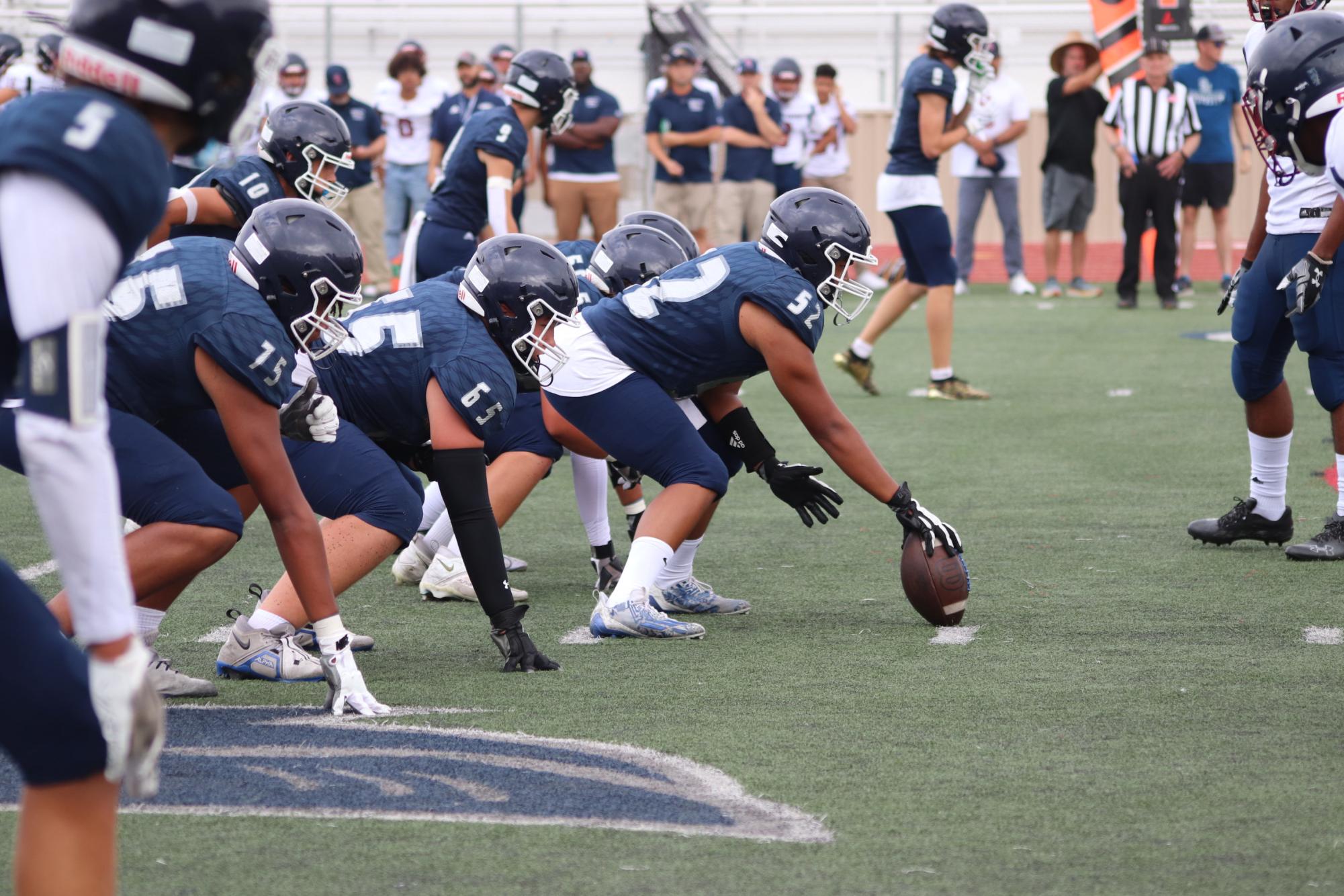
You’re at a San Marcos High School football game, cheering for the Knights while the players give it their all on the field. But have you ever wondered who’s behind the scenes, ensuring these athletes stay in top shape and perform at their best? That’s where the secret weapons come into play. Athletic Trainers have major responsibilities in ensuring the safety and health of athletes at SMHS.
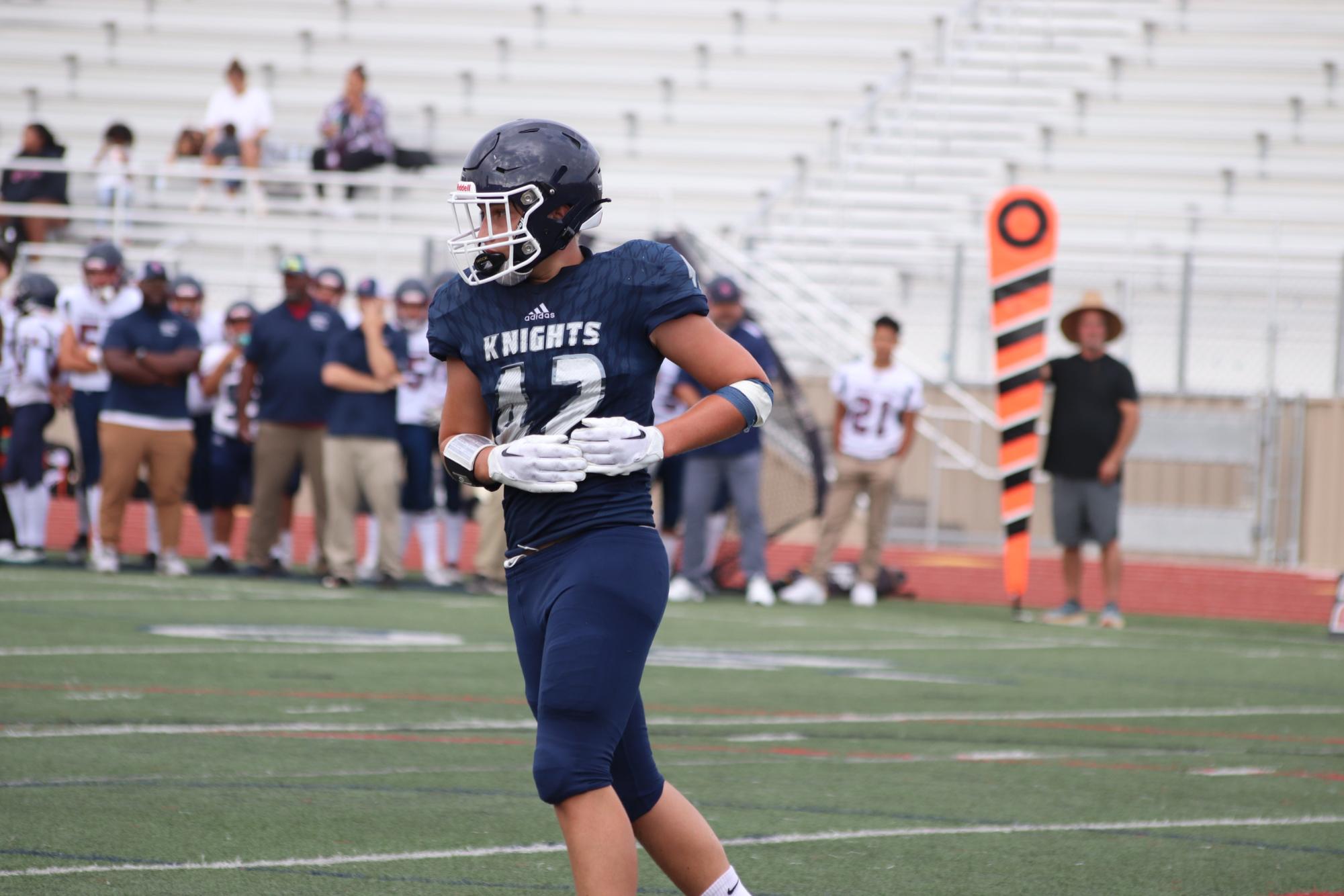
There can be some confusion on the difference between what a physical therapist (PT) does, and what an athletic trainer does. According to Bon Secours, a Catholic health system, trainers work and focus on athletes and people who are physically active where physical trainers are able to diagnose and treat injuries. When seeking care you should visit an athletic trainer for bleeding wounds, decreased range of motion in a body part or joint, lessening tolerance for physical activity, and muscle or joint pain/swelling.
The training room is a great place to get treatment and resources. The students are taught by the head trainer Paul Savage. Savage began his interest in the medical profession after a training career after fracturing his growth plate in his junior year of high school, disqualifying him from participating in sports.
Savage said, “I might not [have been] able to score the winning touchdown, but I fixed the kid that did.”
After college, Savage worked as an athletic trainer for a pro football team, but his career ultimately landed at San Marcos High when the school’s former trainer had back surgery and was out for six months. Savage said, “he called me and asked, ‘hey it’s your off-season can you come cover for me?’ and so I came and covered the high school for six months and of course, I fell in love with it.”
Seniors Juliet Martin, Kristen Patt, and Elizabeth Allen have been diligently working under Savage for four years. Now, they instruct all junior and underclassmen in the sports medicine program with what they have learned over their years in the program. They especially prepare the juniors, Roxy Moreno, and Annais Ramirez, for when they become the head of the bunch.
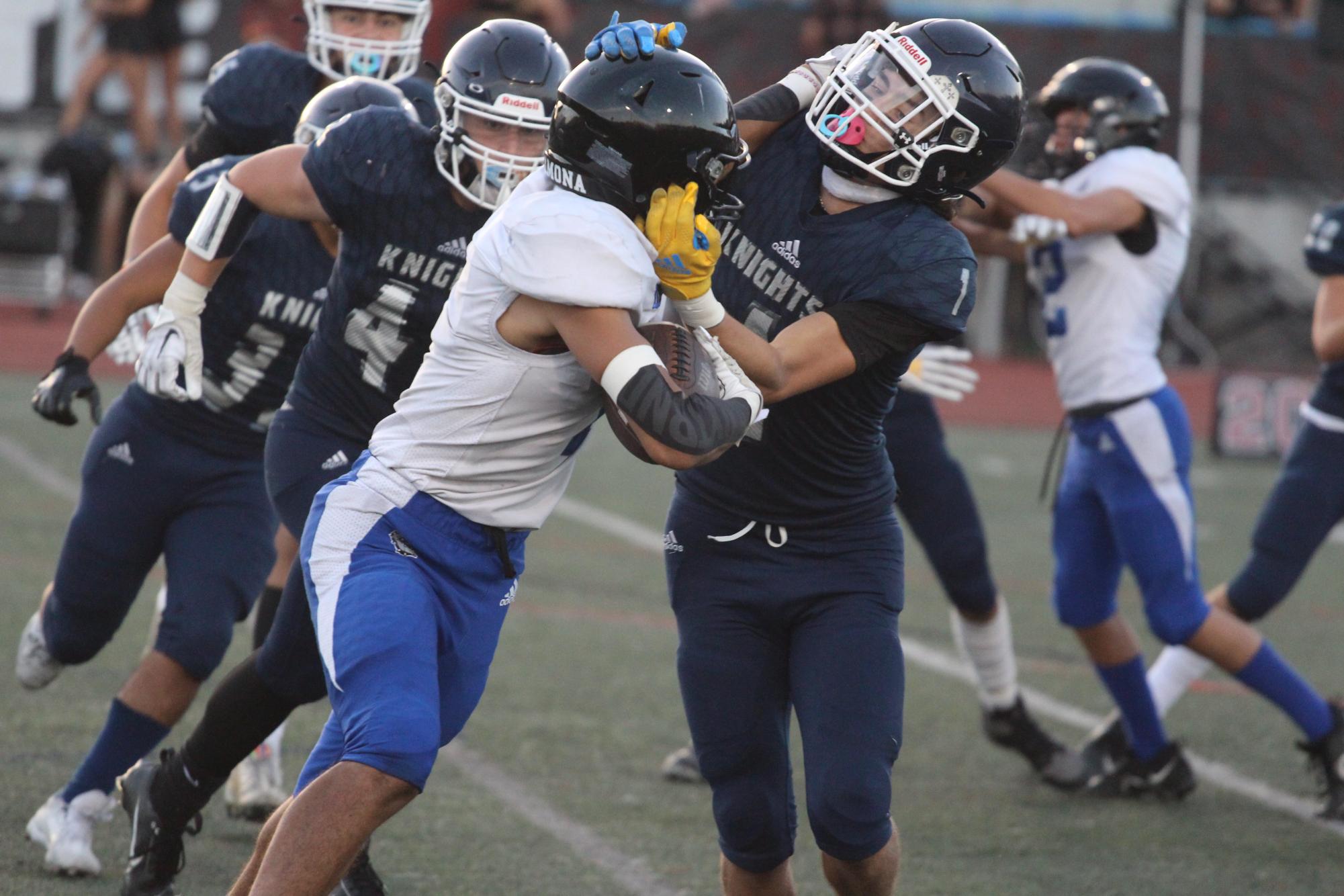
The juniors and seniors have learned a lot about prevention of injuries which is crucial to being able to perform as an athlete. The athletes’ goal is to play their game, the head trainer’s goal is to help achieve the athletes goal by keeping them safe and healthy. The most common injury prevention that you can use before games is taping.
Kristen Patt, a senior in the program said, “There’s a lot of taping because taping is the biggest prevention method; it keeps you from rolling or spraining or rolling it in the opposite direction.”
Not every athlete needs to be taped or treated. You should see a trainer only when someone has had previous or current injuries or feels the need to prevent a certain injury with various treatment methods.
Trainers find ways to assess injuries and give advice, treatment, and support to get SMHS athletes back in action. SMHS has a trainer and student apprentices so they can continue to support SMHS sports programs and SMHS athletes while making sure they are safe. The training room can get really chaotic, especially during game day for the SMHS football team.
The players rely on the help in the training room. Treatments for either before or after our games is to get taped or treatment to prepare or resolve pain for/from the game. Tape, ice, water, X5, Normatec, and other treatment options before and after the games are issued if necessary. When it’s not football season that doesn’t mean the training room is closed and athletes can no longer get treatment, the sports medicine team is always working for every sport, meaning big-time responsibilities.
“It’s really just the health and safety of all around our high school athletes, and all the facilities. We have to make sure all the facilities are safe, so we double check the track, the turf, the gym, and make sure all the playing surfaces are safe to play on,” Savage said, “We have 26 sports and like 58 teams on campus, so we normally have 1,500 athletes per school year… from the basic, making sure they’re all cleared and ready to play, from and injuries they sustained while practicing or playing we take it, we manage to take care of it, help them from the start of the injury to the finish of the injury.”
Relating to Savage’s perspective of his responsibilities, Patt said, “Taking care of the room is also taking care of the people who are in it too.”
She then went on to share how the training room is a safe space for athletes and visitors of the training room. She described an example of how people feel safe by sharing, “People literally just come in here and nap for an hour.”
Game day not just for the SMHS football team but for all the sports, “It’s a responsibility to make sure on game day things run smoothly.” The responsibilities of being a student in the sports medicine program are not only to make sure athletes keep up on their treatment, but it’s also to make the guests in the training room feel comfortable and safe.
According to the National Athletic Trainers Association, it is reported that “More than 47% of schools in California do not have an athletic trainer.” Having a medical professional on campus provides optional care on and off the field to ensure the well-being and safety of SMHS athletes.
Savage provides an amazing environment for students who have an interest in the field.
“I started the student trainer program because of course with 1,500 athletes I only have two hands,” Savage said. “the more people I can teach and help and do stuff with, the more people we can help and take care of.” Savage added how he teaches the way he learned during his internship in college so when students in the program leave SMHS they will be at a junior level in college, knowing more than most students who don’t participate in the program.
Patt and junior Annais Ramirez view their high school level as an advantage in the training room. Patt shared, “As a teenage girl or just a teenager in general, it’s a lot easier to connect with us being students at SMHS because even though we’re students in this program, we’re still students here. We can talk to them about me getting run over at the game [on] Friday, how classes are going, [or] how the summer was.”
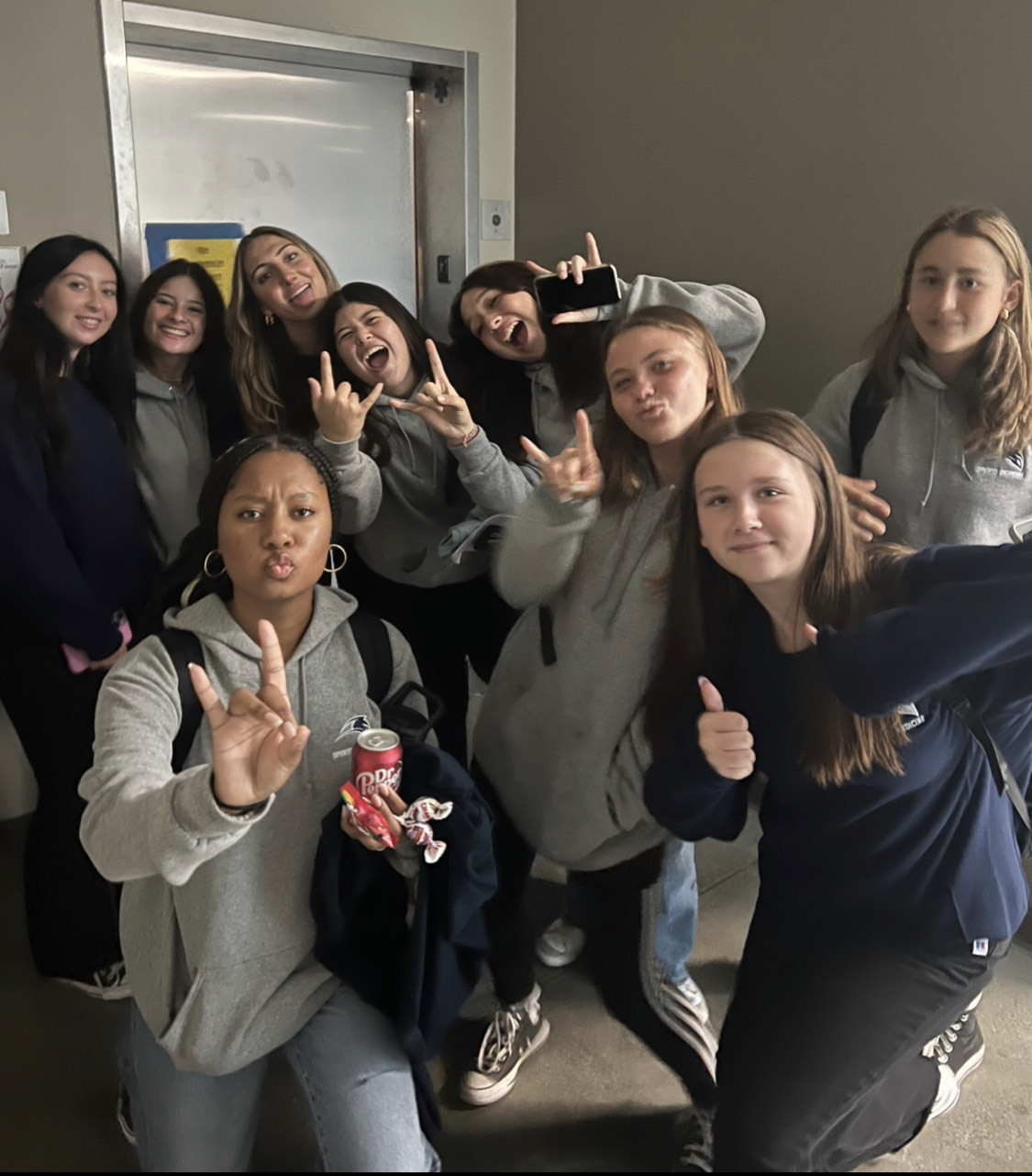
Making and maintaining relationships are essential in the training room. When joining the sports medicine team, you form many connections not only with fellow students in the program but with patients, coaches, athletes, and more. Patt shared that, “Everyone says that you’ll build so many relationships with people [in the program], but a really big part of that is [with] the coaches.” Having a good relationship with the coaches is vital for communication and treatment among their players.
Patt said, “I love getting to know the coaches because they are really good role models, it’s really great to just get some outside life advice.” Through her relationship with the coaches, Patt shows that forming bonds with coaches as a student in this program doesn’t only benefit her in the program, but other life skills as well.
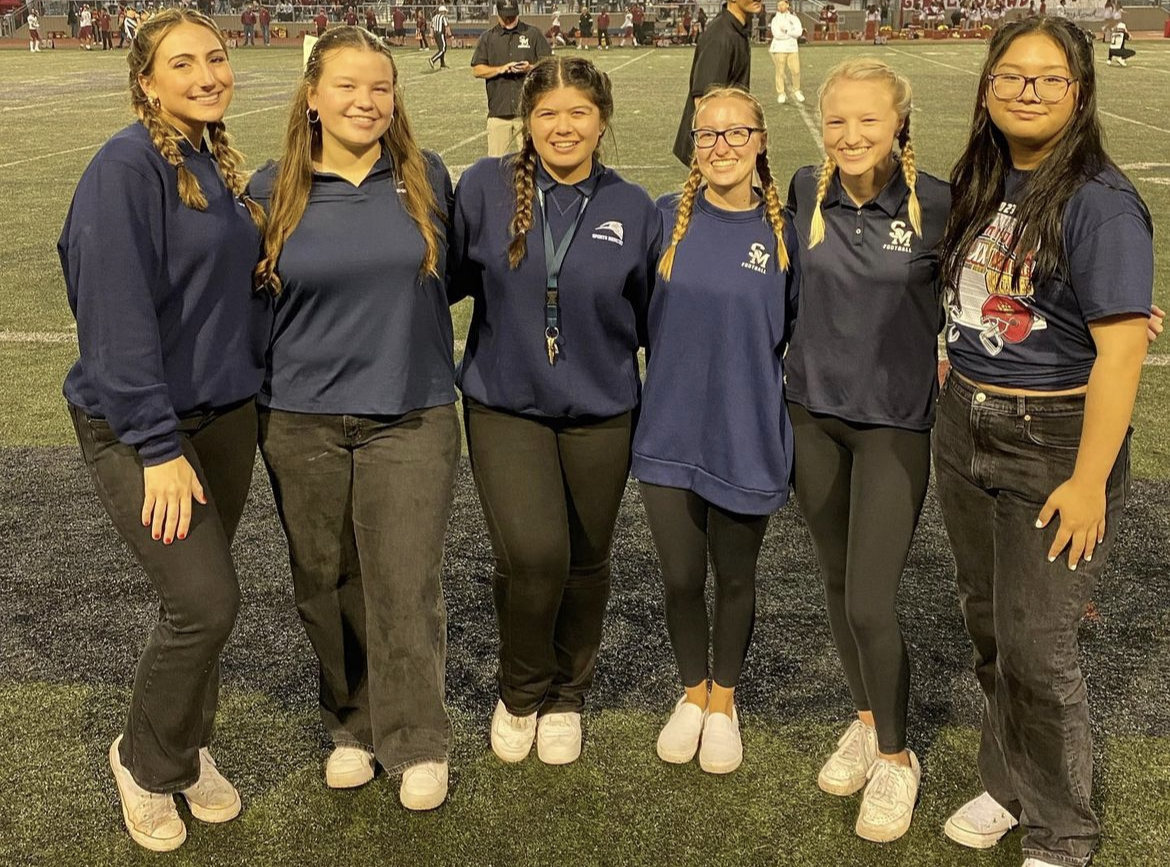
“There’s some crazy times, but overall it’s fun, you make a lot of great connections and you really get to grow as a person here. You become more outgoing, outspoken, and more open-minded.” “You get to know them and then you finally see them play and they literally do so great, like that’s insane,” Ramirez said. Savage’s love for training translates through the passion that his students developed for this field.
Patt said, “A lot of times it’s really chaotic, there’s a lot going on but I also really love the environment of getting to work with so many different people and getting to learn about the medical field. It makes me so proud when you finally get better and get on the field and play.” Being able to receive the joy and accomplishment of watching people you helped recover to do something they love is such an amazing opportunity for students. With Savage’s incredible support and leadership, students face immense growth throughout their experience as students in the program. Ramirez shared that throughout her journey of being in the program, she was able to make great connections and she got the opportunity to grow as a person such as becoming more outspoken, outgoing, and more open-minded. This experience that SMHS and Savage provide does not only teach students to grow in knowledge but also as people. “ I don’t think there’s any other place where we would get that opportunity,” said Patt.
